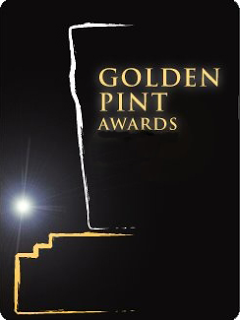Burton Union set rescued to Glasgow
 |
| Re-assembled union set in situ in Glasgow (picture courtesy Epochal) |
Part of the legendary Burton Union system scrapped by Carlsberg-Marston’s at the beginning of the year has been saved – and it’s in Glasgow.
In just a few weeks you’ll be able to see it up close at a newly-opened Glasgow brewery taproom, and drink beer made using it. It’s the realisation of an idea that seemed crazy six months ago.
In January of this year, Glasgow brewer Gareth Young had just read the news that Carlsberg planned to scrap the last remnants of the iconic Burton Union system at Marston’s brewery.
As a brewer more informed than most by historic brewing techniques, Young understood the significance of this equipment – exactly what it did, how widespread the system had been at its height, and its place in British brewing history.
The word iconic has been devalued of late, but in this case it is justified: Marston’s once thought the union casks with their distinctive cast iron X-shaped struts so important that a stylised version of them appears in the company logo.
If you don’t ask, you don’t get. And Young had nothing to lose. He started an email. “Give them to me,” he wrote.
To his surprise, they did. Not without some to-ing and fro-ing, of course, but after several trips to Burton and a bit of welding, Epochal Barrel Fermented Ales has given a new home in Glasgow to the second union set to be rescued from Marston’s.
The union set, comprising six huge casks with a combined capacity of around 4000 litres, has been installed at the brewery in Port Dundas. Once cleaned and tested, it will be put into use once again.
In breweries with a union system, freshly brewed wort is inoculated with yeast and allowed to ferment normally for the first 24 to 36 hours. Then it is transferred into a large trough from where it flows into a set of interlinked wooden casks. As the beer continues to ferment, froth is expelled through pipes back up to the trough, where as it settles the yeast remains in the trough and liquid beer flows back into the casks. It is a very effective means of collecting high-quality yeast for re-use.
It ought to be a match for the beers of Epochal, which specialises in old-style “stock beer”, made with Brettanomyces, the distinctive secondary fermentation yeast that can produce aromas of leather, pineapple and pepper. In the Victorian heyday of Burton brewing, the pale ales of Bass, Marston’s and Allsopp’s would be naturally conditioned in the bottle, as Young’s beers still are today, and develop these flavours over time, as the slow-acting Brettanomyces eats residual sugars that ordinary yeast cannot digest.
 |
| Union sets at Bass in the nineteenth century (Barnard, Noted Breweries vol I, p 76) |
The arrival of the union set is the second major announcement from Epochal in recent weeks, only shortly after Young successfully raised £13,000 to set up a taproom at the brewery.
As has been widely reported, a first union set has been acquired by Thornbridge in Derbyshire, where it will be used for speciality brews. For the much smaller Epochal, on the other hand, it represents a massive expansion: Young will have to brew four batches to fill the union. Until now Young has hand-bottled most of his beer with only a small amount going into kegs, so the capacity of the union set is a major step up.
Having to sell more volume may see Epochal faced with a challenge it has been able to avoid so far: the beers are not for everyone. There is White Smoke for example, a beer which I love, but which seems as if designed to repel everyone else: it is very bitter, quite smoky, and intensely scented with Brettanomyces all at the same time. Any one of these characteristics is often enough for drinkers to reject a beer – all three together make it very much a niche interest. Yet for those who enjoy such beers they seem wonderful.
Does Epochal need to make more approachable beers for the taproom customers of summer? Or can Young convince enough new drinkers to love Brettanomyces? Young says he hopes to bring out a “pintable” core beer. Can he square the circle? From a drinker’s point of view, it will be fun finding out.


Comments
Post a Comment